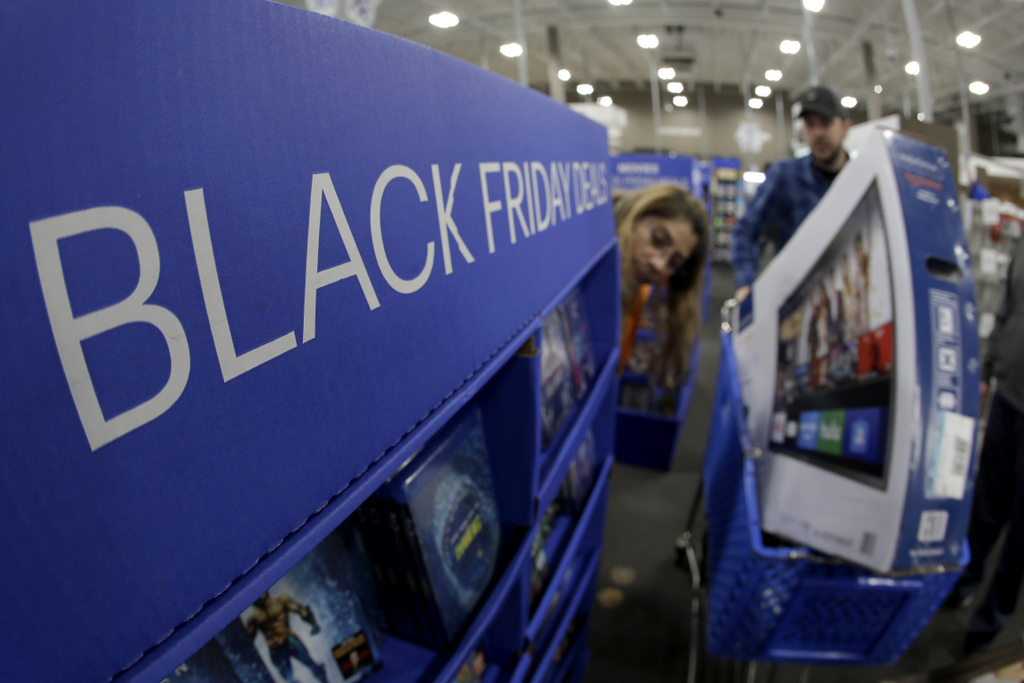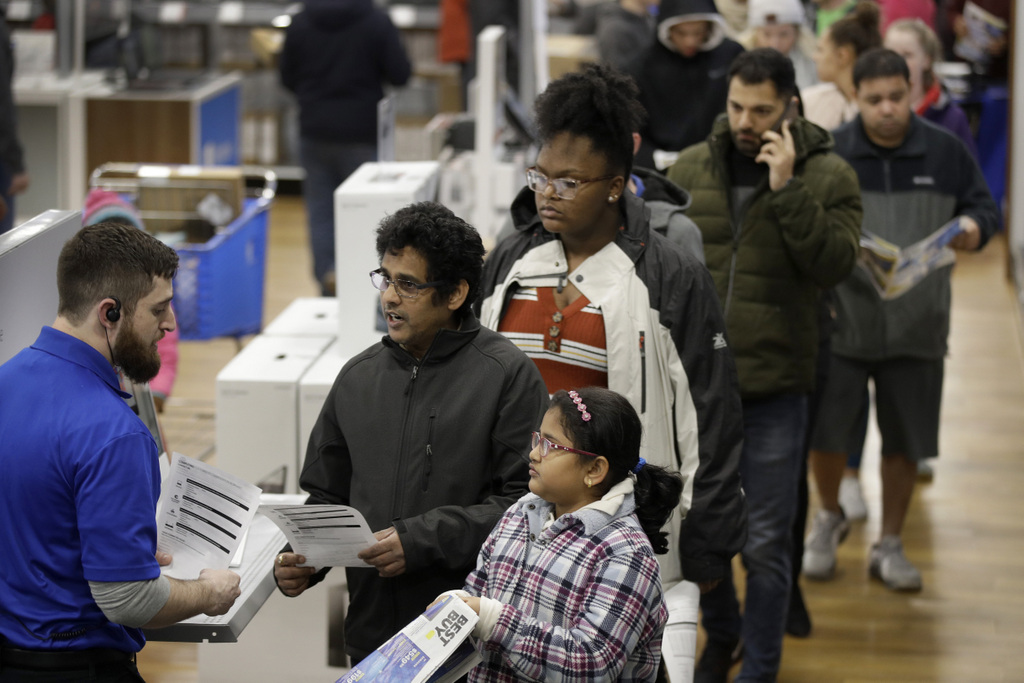[ad_1]
By Anne D’Innocenzio, AP Retail Writer
The mad scramble between Thanksgiving and Christmas has begun — but with six fewer days.
Black Friday once again kicks off the start of the holiday shopping season. But with it will be the shortest season since 2013 because Thanksgiving fell on the fourth Thursday in November — the latest possible date it could be. That means customers will have less time to shop and retailers will have less time to woo them.

At Macy’s Herald Square in Manhattan, there was a steady stream of shoppers by 7 a.m. in search of deals from 40 percent to 60 percent on everything from boots to sheets. But the crowds grew bigger an hour later.
Theodora Hatcher from Manhattan arrived with her son at around 6 a.m. Friday. She said she started holiday shopping two weeks ago, lured by online deals of up to 60 percent at Walmart.com, Amazon and Old Navy.
As for the shortened calendar, she prefers it.
“It adds pressure,” she said.

Seturah Winkler, 43, was shopping in the women’s shoe department with her friend. They were among the throngs of shoppers at Macy’s 5 p.m. opening on Thanksgiving.
Winkler had already spent $1,000 Thursday on coats, comforters and towels and was back for more.
“We took a break, and we are back at it again, “said Winkler of Richmond, Va., who has made the pilgrimage to Macy’s on Thanksgiving and Black Friday an annual tradition for several years. “I love the thrill of it. It’s exciting.”
Adobe Analytics predicts a loss of $1 billion in online revenue from a shortened season. Still, it expects online sales will reach $143.7 billion, up 14.1 percent from last year’s holiday season
The National Retail Federation, the nation’s largest retail trade group, baked the shorter season into its forecast, but it says the real drivers will be the job market. It forecasts that holiday sales will rise between 3.8 percent and 4.2 percent, an increase from the disappointing 2.1 percent growth seen in the November and December 2018 period that came well short of the group’s prediction.
Last year’s holiday sales were hurt by turmoil over the White House trade policy with China and a delay in data collection by nearly a month because of a government shutdown. This year’s holiday forecast is above the average holiday sales growth of 3.7 percent over the previous five years.
NRF expects online and other non-store sales, which are included in the total, to increase between 11 percent and 14 percent, for the holiday period.
Black Friday is expected to once again be the largest shopping day of the season, followed by the last Saturday before Christmas, according to MasterCard SpendingPulse, which tracks spending across all types of payments including cash and check. Thanksgiving Day isn’t even on the top 10 holiday shopping days, according to MasterCard.
The 2019 holiday season will be a good measure of the U.S. economy’s health. Many retail CEOs describe their customers has financially healthy, citing moderate wage growth and an unemployment rate hovering near a 50-year low.
“The overall picture is positive,” said Craig Johnson, president of Customer Growth Partners, a retail consultancy. “People are spending out of positive cash flow as opposed to borrowing.”
Economic growth has moderated since earlier this year, with growth at just 1.9 percent in the July-September quarter, down from 3.1 percent in the first three months of the year. Analysts blame at least part of that on the U.S.-China trade war, which has forced many companies to delay plans to invest and expand.
That’s left consumers as the main drivers. So far, Americans have kept up their spending, allaying fears of a recession.
With more holiday deals happening earlier to compensate for the late start, many have already started to shop. More than half of consumers have already started their holiday shopping and nearly a quarter of purchases have already been made, according to the annual survey released by the NRF and Prosper Insights & Analytics. The survey of 7,917 adult consumers was conducted Oct. 31 through Nov. 6.
“This is further evidence that the holiday season has grown far beyond the period between Thanksgiving and Christmas,” said Matthew Shay, president and CEO of NRF, in a statement.
[ad_2]
Source link
